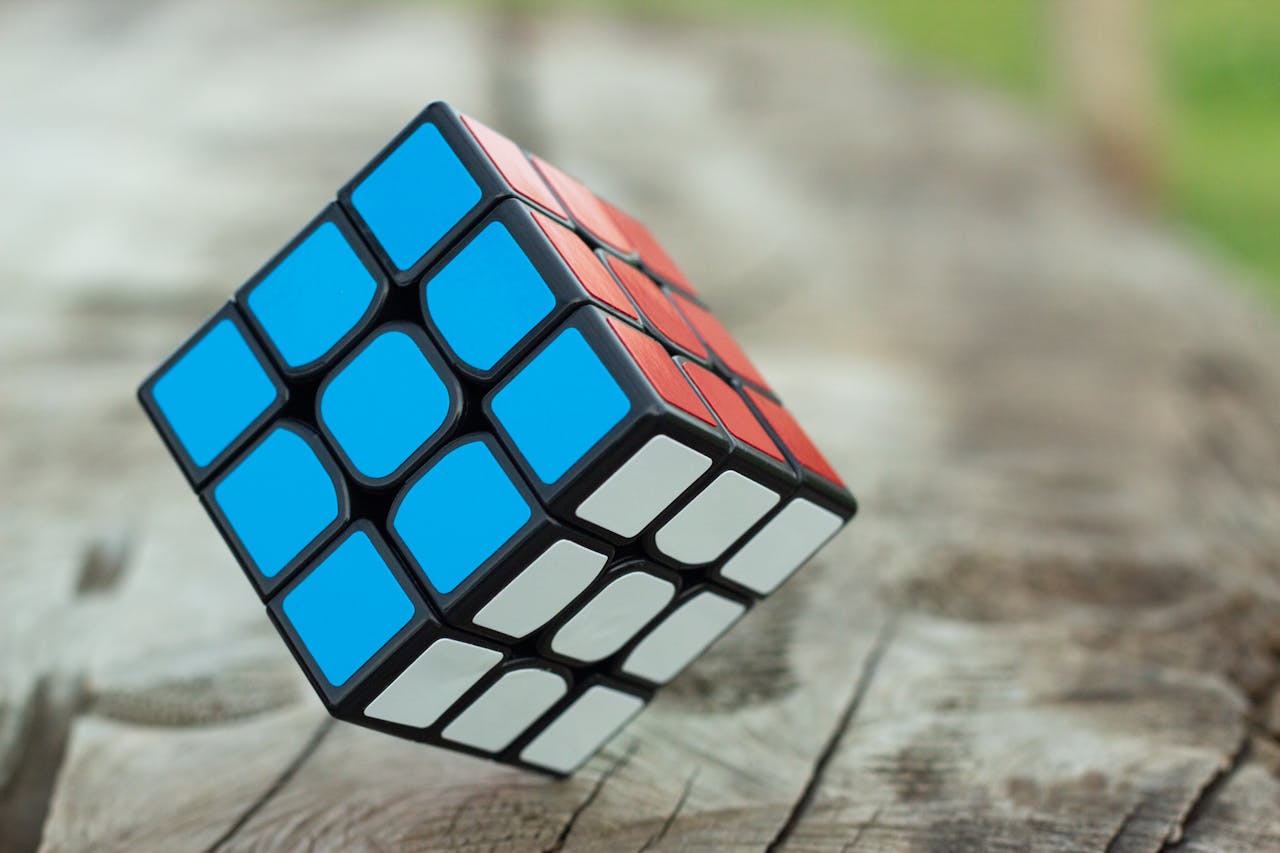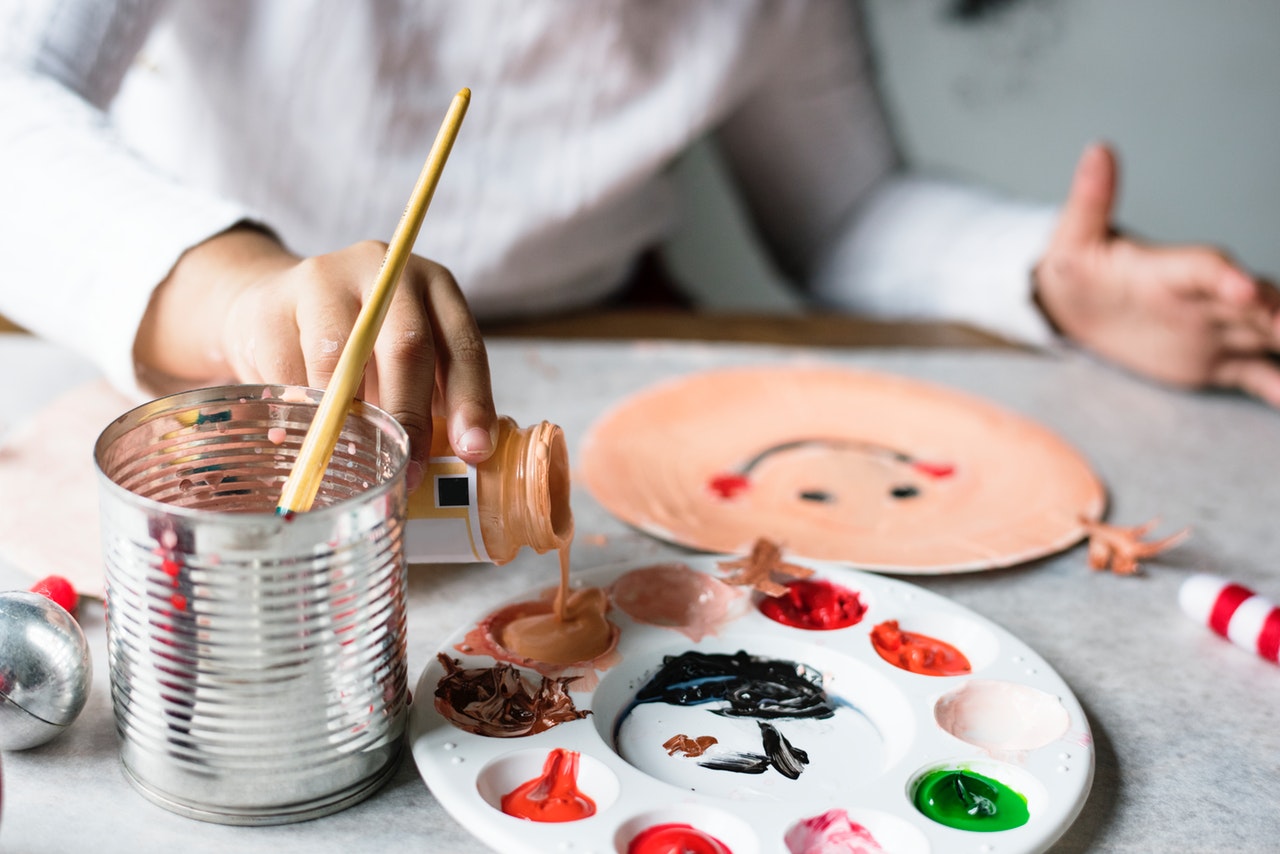
In the world of education and personal development, it’s no secret that puzzles are great to stimulate the brain. From crossword puzzles to Sudoku, games that challenge the mind help us build focus, improve memory, and develop creative problem-solving skills.
But, did you know that solving a Rubik’s Cube, that colorful puzzle loved by millions, can actually help you learn a new language?
At first, turning the cube to match colors may not seem connected to learning vocabulary or grammar. However, brain research reveals a strong connection.
Puzzles like the Rubik’s Cube engage the same mental muscles needed for language learning: working memory, spatial awareness, and pattern recognition. When combined with structured study, these brain-boosting benefits can help learners absorb and retain new languages more effectively.
In this article, we’ll explore the fascinating cognitive overlap between puzzles and language learning, and how integrating both into your routine can unlock powerful results.
Brain Games and Language Skills: What’s the Connection?
Learning any language, whether it’s Spanish, French, or taking online Korean classes, is more than memorizing flashcards or listening to dialogues. It requires a blend of cognitive skills:
- Memory recall for vocabulary and grammar
- Focus and attention to understand and speak clearly
- Pattern recognition to grasp sentence structure and pronunciation
- Cognitive flexibility to switch between languages or meanings
Interestingly, these are the same brain functions used when solving logic puzzles, including the Rubik’s Cube. Research has shown that puzzle-solving improves brain plasticity, which is the brain’s ability to reorganize and adapt. This plasticity plays a key role in learning anything new, especially complex systems like languages.
When learners regularly practice with puzzles, they strengthen their mental agility and working memory, which can lead to improved performance in language tasks like reading comprehension, listening, and conversation. In short, puzzles help condition the brain to learn better.
From Rubik’s Cube to Online Language Classes: Building the Brain for Learning
Whether you’re learning Spanish idioms, practicing German pronunciation, or tackling tonal Mandarin, cognitive strength plays a major role in your success. That’s why many people now combine traditional learning tools with puzzles or logic games to keep their minds sharp.
For example, learners who join online Korean classes may find it easier to remember Hangul symbols or sentence structures when they regularly engage with puzzles. The mental discipline needed to solve a Rubik’s Cube (such as visualizing multiple moves ahead) mirrors the brainwork needed to construct complex sentences or understand grammar patterns.
And it’s not just about kids or young learners. Adults can also benefit from puzzles, especially if they’re learning a new language for travel, work, or personal growth. Regularly challenging the brain keeps cognitive decline at bay and improves attention span, both of which are crucial for language retention.
How Puzzle-Solving Builds Language Learning Strength
Let’s break down how specific skills that are developed through puzzles can be great support for language acquisition:
1. Pattern Recognition
Solving a Rubik’s Cube requires you to notice color patterns and follow specific sequences. Language learning works the same way, you need to recognize patterns in verb endings, sentence structure, and pronunciation. For example, identifying how adjectives change based on gender or plurality in Spanish involves the same kind of analytical thinking.
2. Short-Term and Working Memory
Puzzles rely on holding multiple steps in your mind. When forming a sentence in a new language, learners must juggle subject, verb tense, word order, and vocabulary, all in real-time. A strong memory helps you connect all these elements and use them smoothly when speaking or understanding a language.
3. Visual and Spatial Reasoning
While not always associated with language, spatial awareness helps learners visualize grammar structures and word positions, especially when learning complex writing systems like Korean or Japanese.
4. Problem-Solving and Adaptability
Language learners are always adjusting — whether they’re correcting mistakes or picking up new grammar rules. Puzzle-solving builds the same kind of flexibility: you try a solution, see what happens, and tweak your approach until it works.
5. Focus and Perseverance
Just like solving a Rubik’s Cube takes concentration and persistence, so does learning a language. Sticking with it through challenges is key to long-term progress.
Gamified Learning: The Best of Both Worlds
Today’s language learning apps are increasingly incorporating more puzzle-like features to keep learners engaged. For example, the Promova app has embraced the use of bite-sized challenges, daily streaks, and speaking prompts to help users practice the language in fast-paced and everyday situations.
Some platforms even incorporate logic or matching challenges that mimic puzzle-solving mechanics. These games not only make learning more fun but also enhance memory and pattern recognition.
For learners who enjoy physical puzzles like Rubik’s Cube, adding digital language games into their routine creates a well-rounded brain workout that reinforces new knowledge from multiple angles.
Family Learning: Puzzles and Language at Home
One of the best parts of combining puzzles with language learning is that it works well for learners of all ages. Families can make language practice fun by turning it into a game night with puzzles and vocabulary quizzes. For example:
- Create a game where you match new vocabulary words with pictures or real-life objects.
- Use pairs of flashcards (word + image or word + translation) to play a memory match game.
- Finish a jigsaw puzzle as a team—then describe what you see in the target language.
- Hide a few common objects around the house and write clues in the target language. Let the kids read and follow the instructions to find them.
- Write a simple story and cut it into sentence strips. Mix them up and have the family put the story in the correct order—then read it aloud together.
This method helps children stay motivated and makes learning less intimidating for adults. It also builds a shared sense of progress, which is helpful for staying consistent over time.
Parents looking for structure can supplement puzzle time with formal learning through platforms like Promova. These tools help make language studying fun and enjoyable, a truly rewarding part of family life.
Making It Work: Tips for Combining Puzzle Solving and Language Study
Here are some practical ways to combine your passion for puzzles with your language learning goals:
- Warm up your brain: Kick off your study session by solving a quick puzzle or playing a short brain game. This sharpens your focus and gets your brain ready to learn.
- Set puzzle rewards: After finishing a language lesson, treat yourself to a puzzle session. It turns learning into something to look forward to and keeps motivation high.
- Learn language through puzzle instructions: Try watching Rubik’s Cube tutorials or reading instructions in your target language. It’s a fun way to improve listening and reading skills while doing something you enjoy.
- Use multilingual puzzle games: Look for puzzle games that allow you to change the language settings. Switching to your target language’s interface helps you pick up new words naturally in real-life contexts.
- Create vocabulary puzzles: Make crosswords, word searches, or scrambled sentence games using your vocabulary list. These activities are not only effective but also fun to share with friends or study groups.
Whether you’re racing through a vocabulary game or solving a jigsaw in French, remember, the truth is language learning works best when it brings people together.
Final Thoughts: A Smarter Way to Learn Languages
While there’s more than one path to language fluency, adding puzzles to your routine might be the brain boost you didn’t know you needed. From improving memory and focus to sharpening pattern recognition, solving puzzles like the Rubik’s Cube supports the kind of mental work that language learning demands.Whether you’re prepping for a trip abroad, taking online classes, or just setting a new personal goal, remember: language learning is both a science and an art. Strengthen your brain, play a little, and explore new ways to make learning enjoyable.

